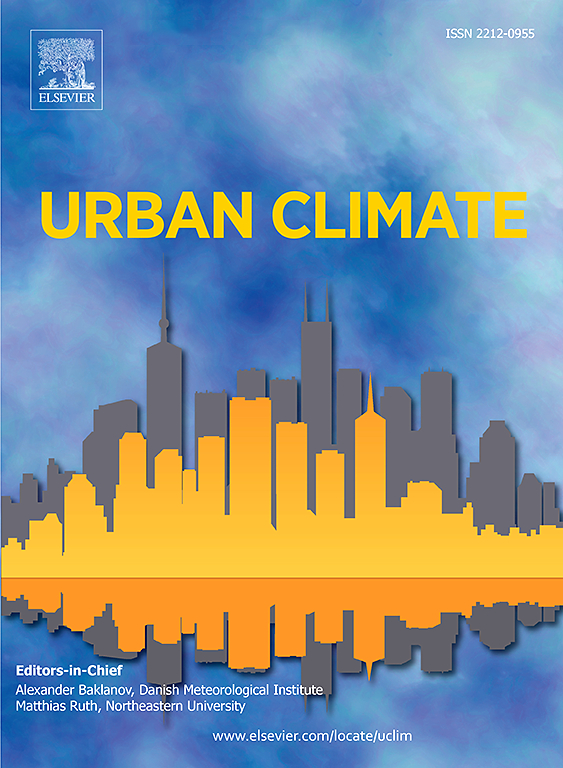Integrating local climate zones and spatial modeling for carbon emission forecasting in the Guangdong-Hong Kong-Macao Greater Bay Area toward 2060
IF 6.9
2区 工程技术
Q1 ENVIRONMENTAL SCIENCES
引用次数: 0
Abstract
High-resolution and sector-specific spatial prediction of carbon emissions is essential for developing effective urban planning strategies to mitigate climate change. This study introduces an innovative approach by integrating the Local Climate Zone (LCZ) scheme and calculating landscape metrics indices as impact factors to enhance the spatial precision of carbon emission predictions. Using the Long-range Energy Alternatives Planning System (LEAP) model, enriched with machine learning and sector-specific analysis, this research predicts spatial carbon emissions in the Guangdong-Hong Kong-Macao Greater Bay Area (GBA) from 2020 to 2060 at a fine resolution of 500 m × 500 m under the Business-As-Usual scenario. Results indicate a peak in emissions around 2030, followed by a targeted 22.7 % reduction by 2060 compared to 2020 levels. While a shift from coal to cleaner energy sources is evident, the increasing dependence on natural gas raises concerns. The study highlights that urban morphology, population density, and LCZ classifications significantly shape emission pathways. Quantitative modeling reveals that morphological features such as LCZ-based aggregation and connectivity indices have measurable effects on emissions across sectors. The findings emphasize the need for integrating spatial planning with energy policies and provide a replicable framework for metropolitan regions, which could guide dynamic policy strategies for urban development.
面向2060年粤港澳大湾区气候分区与空间模拟的碳排放预测
高分辨率和特定部门的碳排放空间预测对于制定有效的城市规划战略以减缓气候变化至关重要。本研究提出了一种创新的方法,将当地气候区(Local Climate Zone, LCZ)方案与景观指标作为影响因子相结合,以提高碳排放预测的空间精度。本研究利用长期能源替代规划系统(LEAP)模型,结合机器学习和行业分析,以500米× 500米的精细分辨率预测了2020 - 2060年粤港澳大湾区(GBA)的空间碳排放。结果表明,排放量将在2030年左右达到峰值,随后到2060年的目标是在2020年的基础上减少22.7%。虽然从煤炭向清洁能源的转变是显而易见的,但对天然气的日益依赖引起了人们的担忧。研究强调,城市形态、人口密度和LCZ分类对排放路径有显著影响。定量建模表明,形态特征(如基于lcz的聚集和连通性指数)对跨部门排放具有可测量的影响。研究结果强调了将空间规划与能源政策相结合的必要性,并为大都市地区提供了可复制的框架,可以指导城市发展的动态政策战略。
本文章由计算机程序翻译,如有差异,请以英文原文为准。
求助全文
约1分钟内获得全文
求助全文
来源期刊

Urban Climate
Social Sciences-Urban Studies
CiteScore
9.70
自引率
9.40%
发文量
286
期刊介绍:
Urban Climate serves the scientific and decision making communities with the publication of research on theory, science and applications relevant to understanding urban climatic conditions and change in relation to their geography and to demographic, socioeconomic, institutional, technological and environmental dynamics and global change. Targeted towards both disciplinary and interdisciplinary audiences, this journal publishes original research papers, comprehensive review articles, book reviews, and short communications on topics including, but not limited to, the following:
Urban meteorology and climate[...]
Urban environmental pollution[...]
Adaptation to global change[...]
Urban economic and social issues[...]
Research Approaches[...]
 求助内容:
求助内容: 应助结果提醒方式:
应助结果提醒方式:


